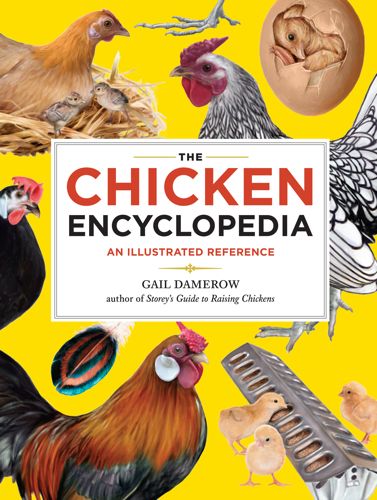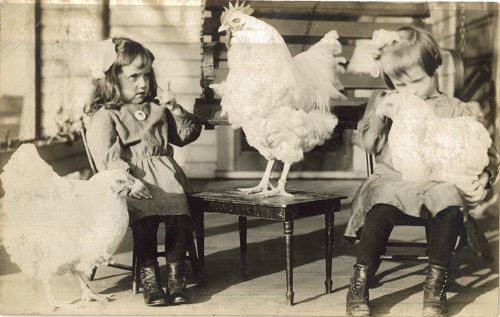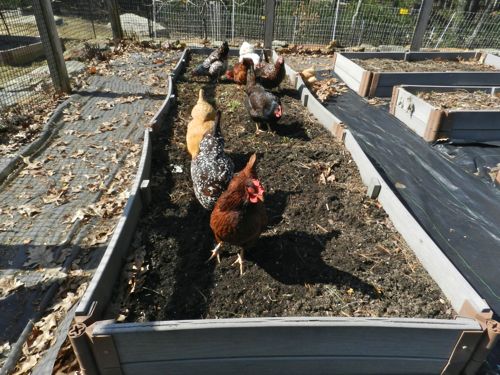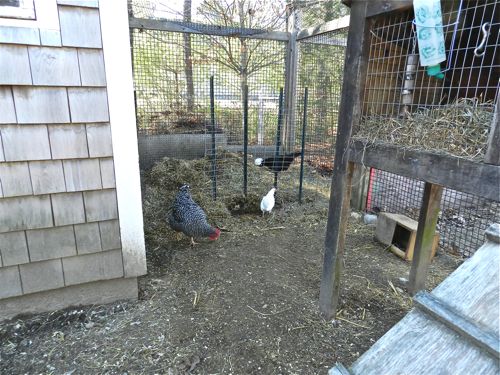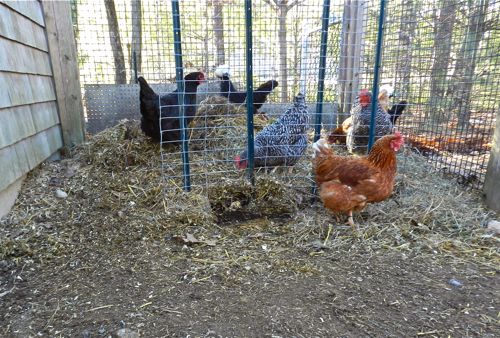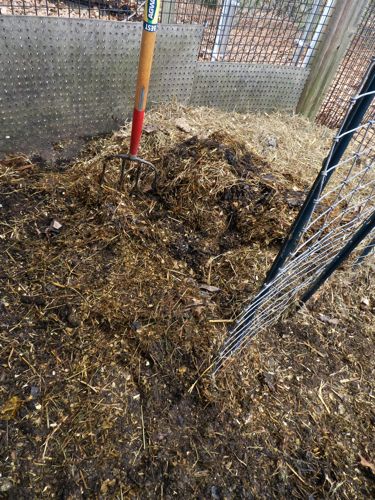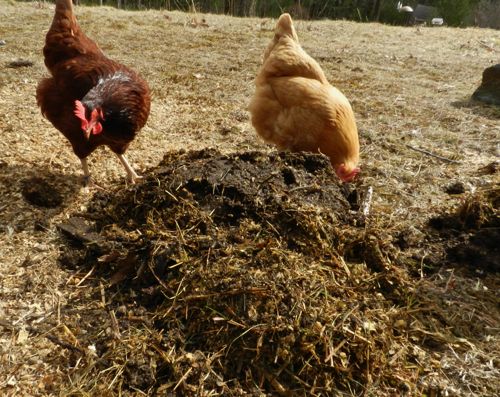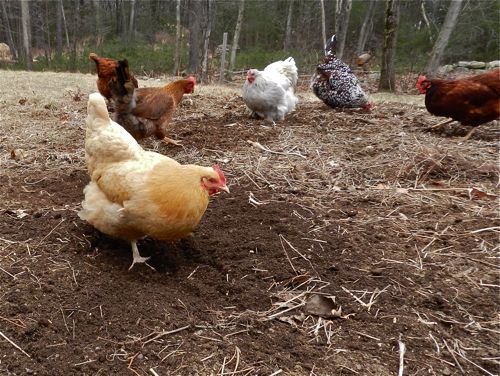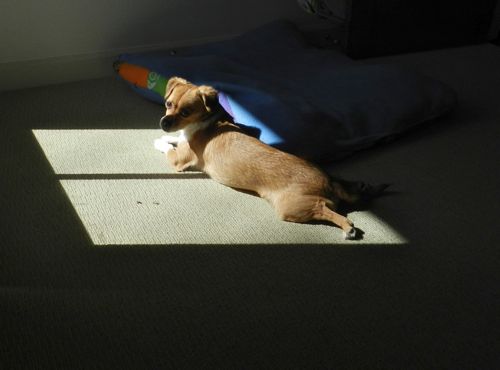If you’ve ever searched for good, solid information about raising chickens, you’ve found it in Gail Damerow’s books. Actually, much of the advice out there on the internet originally came from Gail’s writings (often passed around so many times that she is no longer credited.) When I started out with chickens more than fifteen years ago, (before Google!) the go-to source for advice were Gail’s Chicken Health Handbook and her Storey’s Guide to Raising Chickens, and her books continue to be the first place that I look for answers to my chicken-keeping questions.
Over the years, I’ve learned from Gail’s sage advice, and adapted it to a climate, set-up and perspective that is different than hers. Gail has a sustainable hobby farm in Tennessee, with many productive animals; I have a small flock of hens, some laying, some retired, tucked into a suburban neighborhood in New England. Despite the differences, Gail and I have plenty of commonalities. So, when the folks at Storey Publishing asked me if I’d host a Q & A with Gail on my blog to promote her most recent book, The Chicken Encyclopedia, I jumped at the chance. And what do you think was the one thing I wanted to ask her about? Something pretty, like a fancy chicken breed? Or maybe what she thinks about using broody hens for incubation? No. Of course nothing that charming. I’ve been thinking about gapeworms. These are parasites that live in the chicken’s throat and actually makes the bird gasp for air. It’s an icky, disgusting topic – perfect for the interview!
Luckily, I’ve never seen gapeworm myself. But, every so often someone asks me about a hen who has her neck stretched out and sort-of coughing. Could it be gapeworm? Surely, Gail must have seen them firsthand. Here is my email conversation with Gail:
Terry: Have you had any cases of gapeworm on your farm?
Gail: Not on this farm, where we’ve lived for 30 years. Gapeworm is not all that common. But I recall seeing it some 40+ years ago, when I first started out with chickens.
Terry: Is it true that a chicken with gapeworms looks similar to one that has a respiratory disease?
Gail: Yes.
Terry: How is it the same?
Gail: The chicken gasps, sneezes, coughs, and develops general symptoms of disease (loss of energy, loss of appetite, etc.)
Terry: How is it different?
Gail: The chicken makes grunting sounds, stretches its neck and appears to be yawning, shakes its head in trying to dislodge worms from its windpipe, and sometimes coughs up a worm.
Terry: Can you actually look down the throat and see the worms, or is a firm diagnosis only done with a necropsy? Fecal test?
Gail: Looking in the throat you might see lumps, which may or may not be gapeworm. If the infestation is really severe, and you can crank the chicken’s mouth open and peer down with a flashlight, you might spot attached worms. Finding a gapeworm (which can be up to 2 cm long) that’s been coughed up would offer a definitive diagnosis. A fecal test would reveal gapeworm eggs in the droppings.
Terry: Do you recommend a wormer?
Gail: The most common parasitic worm in chickens is roundworm, for which the most common wormer (and the only one approved for use with poultry) is Piperazine, which does not affect gapeworm. For that you need something stronger and off-label, such as ivermectin.
Terry: Thanks for shedding some light on this rather icky, wiggly, subject!
This exchange is a good reminder that you should seek advice from chicken keepers with years of experience. Use caution and commonsense when looking for answers on-line. If you do an internet search for chicken respiratory issues, gapeworm will pop up, as if this is a prevalent cause of breathing issues. I’ve seen countless on-line discussions which toss up gapeworms as a probable cause for coughing in a flock. It’s like when you have a sore throat, troll online for ideas for relief, and an hour later you’re sure that your windpipe will have to be removed due to a rare, tropical disease! If Gail hasn’t seen a case of gapeworms in 40 years, then it’s unlikely that you will. Which is a good thing. Gapeworms sure sound nasty.
(If you do have first-hand experience with gapeworms, I’l like to hear about it!)
GIVEAWAY! I have one copy of The Chicken Encyclopedia to give away. All you have to do to enter is to leave a comment on this blog telling me what you would have asked Gail. (But, since I can’t do another interview with her, I’ll answer them the best that I can.) The contest ends March 17 at 10 pm EDT. Storey will be mailing the book directly to the winner, and has limited this giveaway to addresses in the US. (I appreciate my international readers, and I promise that I’ll have another giveaway soon that will include you!)
update: this contest is now closed. Thanks to everyone for entering!
More than a dozen blogs were on this tour. You can see the other stops here:
3-Mar Vintage Garden Gal http://www.vintagegardengal.com/
4-Mar The Garden Roof Coop http://www.thegardenroofcoop.com/
5-Mar Common Weeder http://www.commonweeder.com/
6-Mar Chickens in the Road http://chickensintheroad.com/
7-Mar Garden Rant http://www.gardenrant.com/my_weblog/
8-Mar Fresh Eggs Daily http://fresh-eggs-daily.blogspot.com/
9-Mar My Pet Chicken Blog http://blog.mypetchicken.com/
10-Mar Coop Thoughts http://www.thegardencoop.com/blog/
11-Mar BoHo Farm and Home http://www.bohofarmandhome.com/
12-Mar Happy Chickens Lay Healthy Eggs http://happychickenslayhealthyeggs.blogspot.com/
13-Mar A Charlotte Garden http://acharlottegarden.blogspot.com/
14-Mar Farm Fresh Fun http://farmfreshfun.blogspot.com
15-Mar The HenCam http://www.hencam.com/henblog/
16-Mar Life on a Southern Farm http://georgiafarmwoman.blogspot.com/
17-Mar A Dozen Girls, the Chicken Chick http://eggcartonlabels.blogspot.com/
18-Mar North Coast Gardening http://www.northcoastgardening.com/
